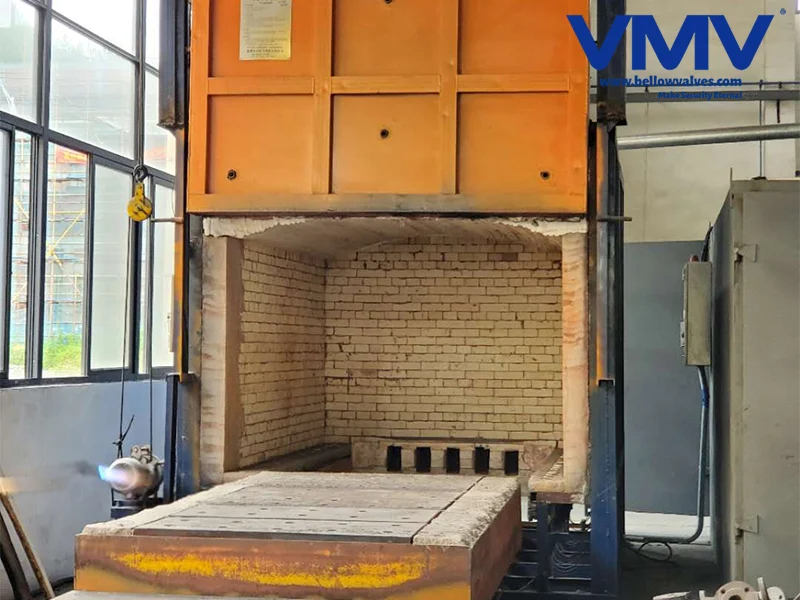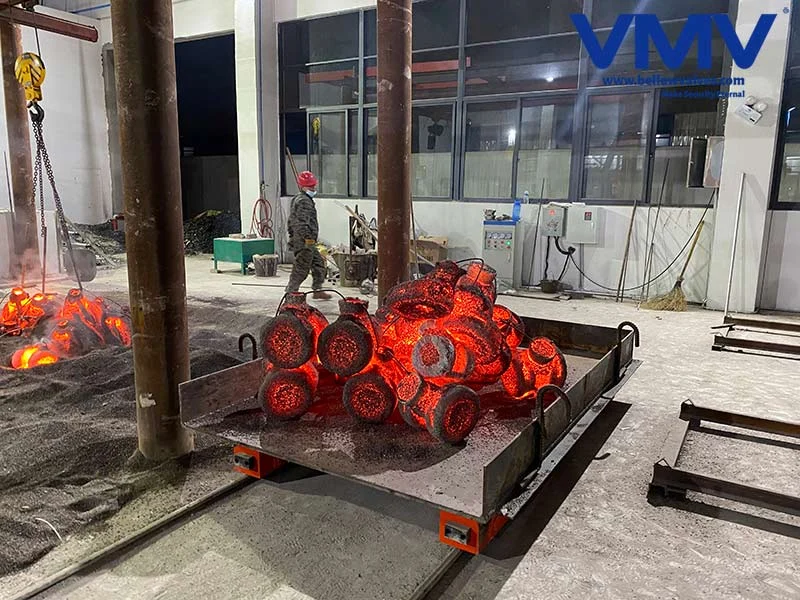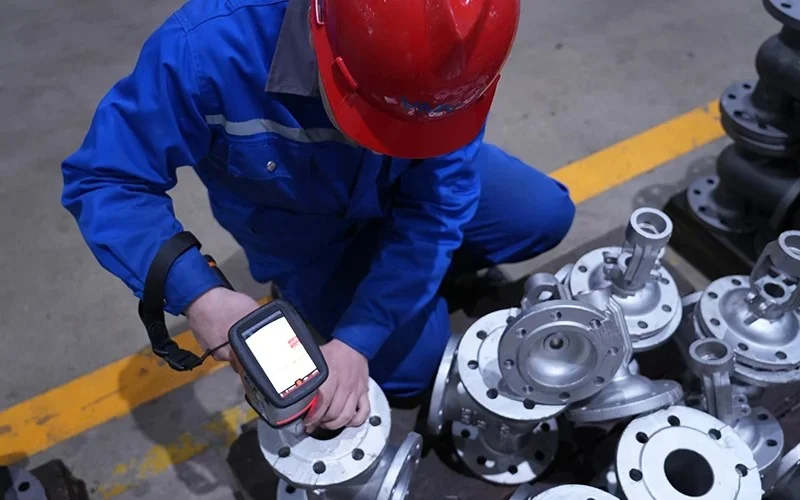Valve manufacturers play a vital role in the industrial sector, providing critical components that regulate the flow of liquids and gases in various systems. The process of manufacturing high-quality valves is complex and requires a high level of expertise to ensure the production of high-quality, reliable, and efficient valves.
Valve Manufacturing Process
Valve casting involves melting metal into a liquid that meets specific requirements, pouring it into a mold, and then cooling, solidifying, and finishing it to produce a valve casting with a predetermined shape, size, and performance. This process involves the following steps:
Mold Design and Raw Material Preparation
• Mold Design: Based on the structural characteristics of the valve body (such as diameter and wall thickness), CAE software is used to optimize the mold parting, gating system, and feeding block layout.
• Raw Material Selection: Based on the valve’s application requirements and performance characteristics, the appropriate metal material is selected. Common materials include stainless steel, carbon steel, and cast iron.
Melting and Alloying
Depending on the selected material, appropriate melting equipment and processes are used for melting, followed by alloying to achieve the desired performance requirements:
• Ductile Iron: Melt in a medium-frequency induction furnace at 1450-1550°C. Be mindful of the effects of condensed water vapor and adjust the carbon-silicon-manganese ratio. During spheroidization, use a rare earth magnesium spheroidizer (0.7%-1.2%) and control the temperature between 1440-1490°C. Ferrosilicon or barium ferrosilicon (0.5%-1%) is then inoculated to enhance toughness.
• C12A Alloy Steel: A combination of medium-frequency furnace roughing and AOD furnace refining is used, with controlled argon flow and electrode depth. When the carbon content of the molten steel is less than 0.5%, a slight positive pressure is maintained to keep the hydrogen content ≤2ppm. Argon blanketing is used during pouring to prevent oxidation.
Casting
The molten metal is poured into a pre-prepared mold and allowed to cool and solidify to form the valve blank. During the pouring process, parameters such as pouring temperature, speed, and time must be carefully controlled:
• Ductile iron: The pouring temperature is 1310-1430°C. If using the lost foam process, the temperature must be increased by 30-50°C.
• C12A alloy steel: The molten steel is allowed to stand under argon protection before pouring. The sand removal temperature is ≤200°C.
Heat Treatment and Strengthening

The valve blank undergoes heat treatment after casting to improve its structure and performance. The heat treatment process varies depending on the material:
• Ductile iron: Annealing (700-750°C for 2-4 hours) is performed to relieve stress; normalizing (850-900°C) is performed to increase strength.
• C12A alloy steel: Double normalizing (1080°C + 1050°C) is used to refine the grain size, followed by tempering at 760°C to balance the properties. The temperature control accuracy is ±14°C. Finishing
After cooling, the casting undergoes sand removal, riser removal, and polishing to ensure the valve’s appearance meets the required specifications. The casting is also inspected for dimensional accuracy, surface quality, and internal defects to ensure it meets design requirements.
Subsequent Processing and Assembly

Based on the specific valve requirements, the finished casting undergoes further machining, such as drilling, cutting, and grinding, to achieve precise dimensions and surface finish. The finished components are then assembled to complete the valve.
Quality Control Measures

During the valve production process, inspections are often performed to ensure quality. The following are common inspection methods:
X-ray inspection: Detects internal pores and shrinkage cavities (according to ASTM E94).
Ultrasonic testing: Detects cracks in thick-walled castings (sensitivity ≥ 2mm equivalent defect).
Destructive Testing: Mechanical properties (such as tensile strength and hardness) are tested on random samples. Metallographic analysis verifies graphite morphology (a spheroidization rate ≥ 90% is acceptable). Shell pressure test: 1.5 times nominal pressure, maintain pressure for 5 minutes with no leakage.
Seal pressure test: 1.1 times nominal pressure, leak rate detection (API 598 standard requires ≤ 0.1 mL/min).
If you’re looking for a high-quality valve manufacturer, Newton is a good choice. We provide detailed inspection reports, from factory inspection of valve castings and internal components, to semi-finished product assembly inspection, performance inspection, and finally finished product inspection.

